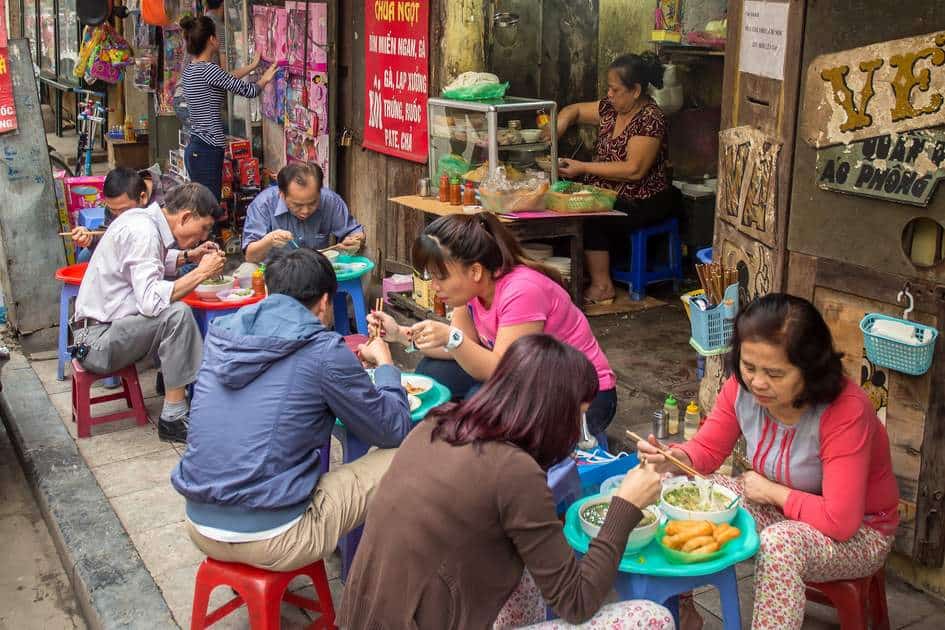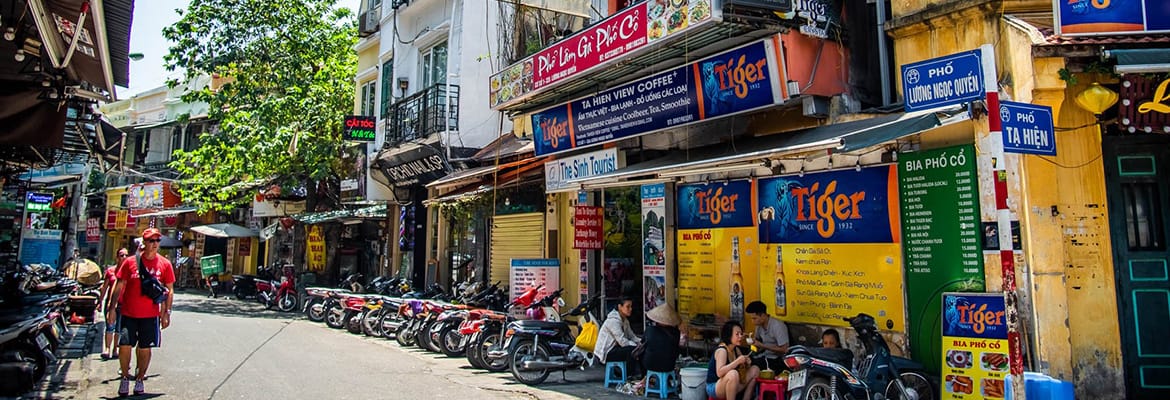I. Introduction
1.1. Breakfast in Vietnamese Culture
Breakfast is a key part of Vietnamese culture, both as a meal and as a treasured habit. It provides a time for social and familial bonding. Families frequently gather around the table for breakfast to strengthen ties and promote a feeling of community. Vietnamese breakfasts are often filling and healthy, offering vital nutrition for a busy day.
Breakfast sets the tone for the day and showcases Vietnam’s rich culinary tradition, whether you choose a bowl of steamy pho or a crunchy bánh mì sandwich.
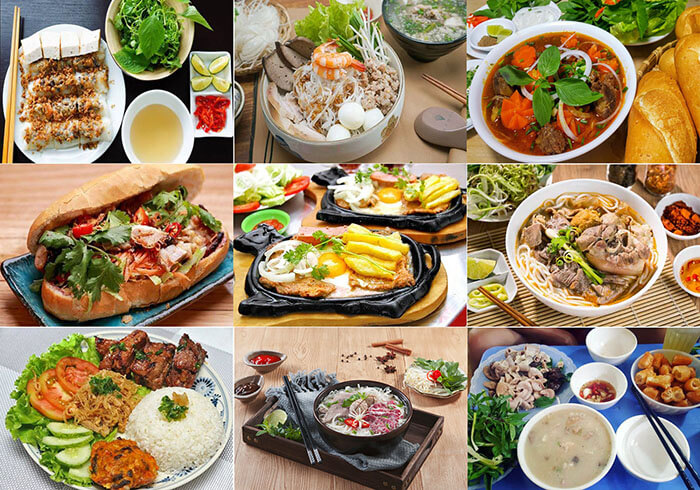
1.2. Regional Variations in Vietnamese Breakfast
Breakfasts in Vietnam vary considerably from region to region, showing the diverse culinary landscape of the country. Northern regions often have milder flavors and dishes like pho and bánh mì that are influenced by Chinese cuisine.
Central Vietnam offers spicier and more complex flavors such as bún riêu and cơm hến, along with strong seafood dishes. In the southern regions, breakfasts tend to be sweeter and more tropical, such as bánh xèo and bánh canh cua.
These regional differences reflect the unique local ingredients and cultural influences of each region, making Vietnamese breakfasts a delightful exploration of flavors and traditions.

II. Pho – A Breakfast Staple
2.1. What is Pho?
The iconic Vietnamese noodle dish pho is distinguished by its fragrant and delicious broth. This well-liked meal often includes rice noodles, a clear, aromatic beef or chicken broth, and a variety of meats, such as thinly sliced beef or chicken.
Fresh herbs, bean sprouts, lime, and other sauces like hoisin and Sriracha are frequently included in pho, allowing diners to personalize their bowls to their tastes.
The attraction of the dish comes in its harmonic combination of umami-rich, flavorful broth, soft meats, and the light crunch of herbs and vegetables, making it a warm and filling dish loved in Vietnam and across the world.
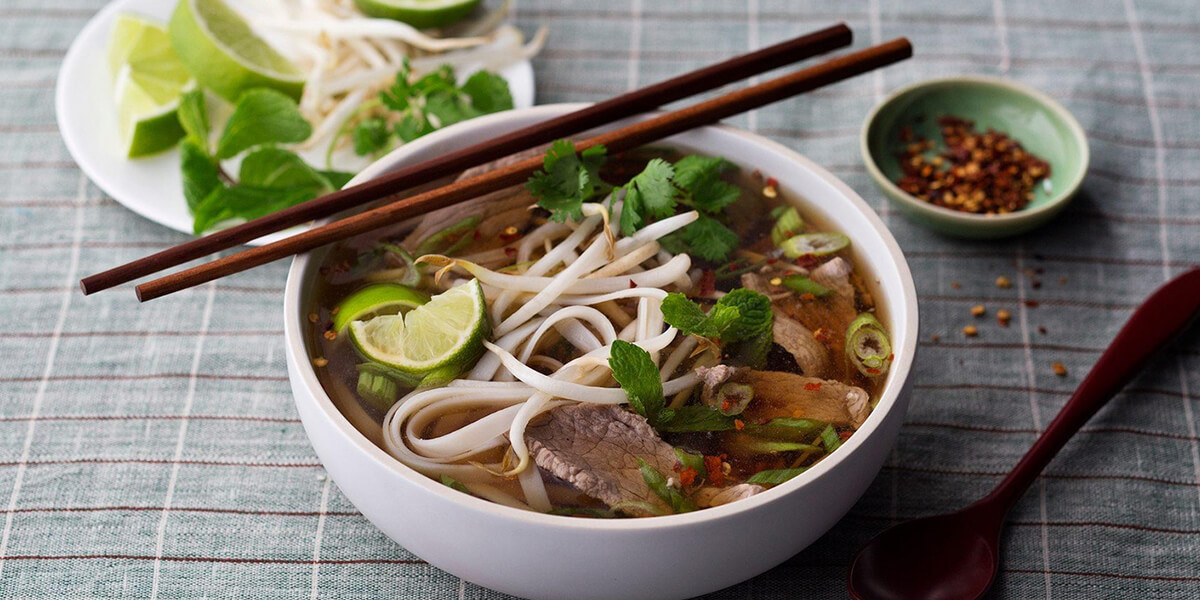
2.2. Ingredients and Preparation
The meticulously made broth that gives pho its particular flavor is cooked for hours with a mixture of fragrant herbs, including star anise, cinnamon, cloves, cardamom, charred onions, and ginger.
In order to make Pho, the strained broth is combined with rice noodles and uncooked meat pieces, usually beef or chicken. The meat is cooked and given a deep taste by the heated broth.
After that, the meal is topped with fresh herbs, bean sprouts, lime wedges, and sauces so that guests may adjust the flavor to their liking. It takes time and careful attention to prepare pho, which produces a cup of soup that is both cozy and flavorfully complex.
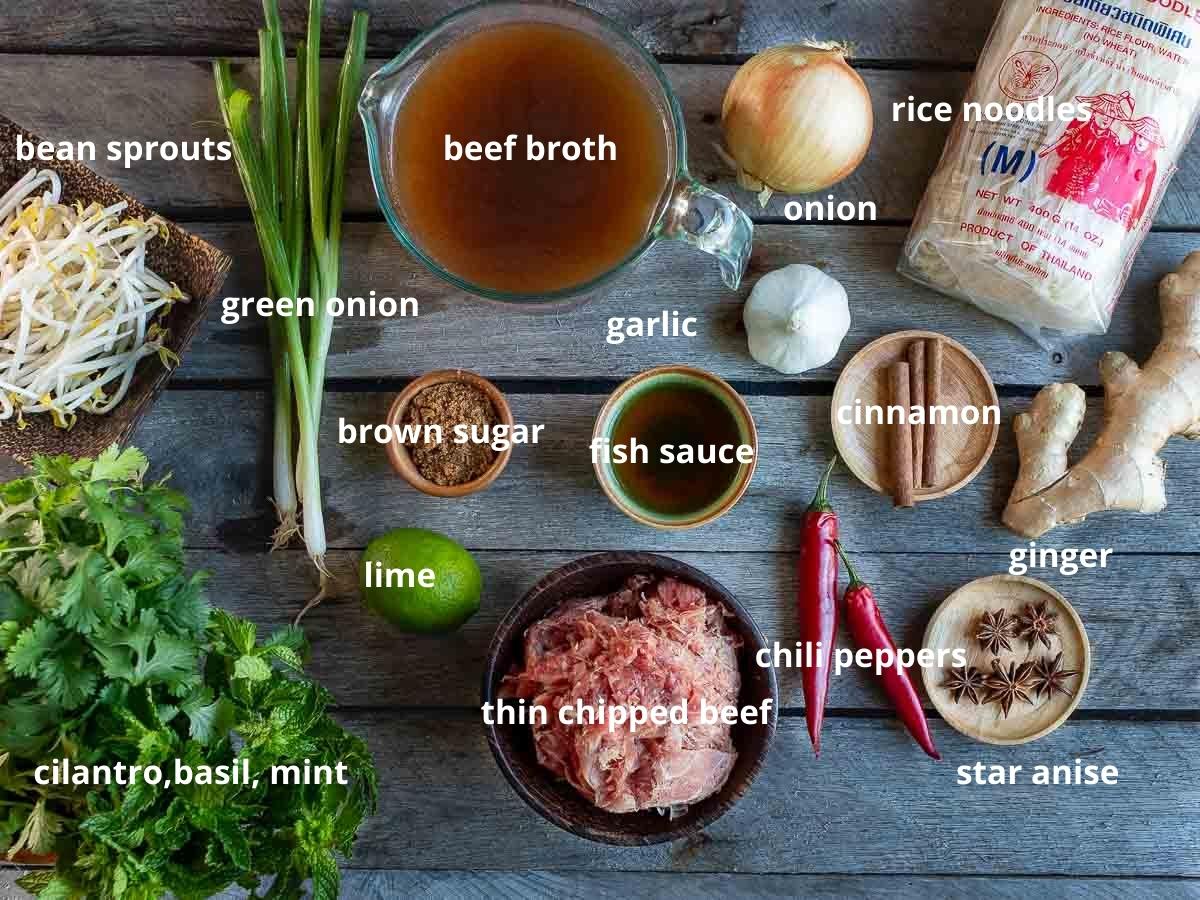
2.3. Pho Variations Across Vietnam
The popular Vietnamese meal pho may be prepared in a variety of ways, although these variants can vary greatly depending on the locale. The broth is often clear and lightly spiced in northern Vietnam, letting the natural flavors of the beef or chicken stand out.
The southern areas, on the other hand, embrace sweeter and hotter broths, frequently utilizing additives like sugar and fish sauce. Bn B Hu, a hotter beef noodle soup with a robust and extremely delicious broth, is a speciality of Central Vietnam.
The way that Pho is prepared in each area highlights the regional culinary influences and ingredients, making it a fascinating and varied cuisine to experience across Vietnam.

Bánh Mì – Vietnamese Breakfast Sandwich
3.1. Bánh Mì Components
Bánh mì, the notorious Vietnamese sandwich, is celebrated for its agreeable mix of fixings. At its center, a bánh mì comprises a dried up French baguette that’s light and vaporous on the interior.
The sandwich is at that point regularly filled with a assortment of components, which may incorporate proteins like flame broiled pork, Vietnamese frankfurter (chả lụa), or fresh pork paunch, complemented by new vegetables such as cucumber, cilantro, and salted daikon and carrots.
Condiments like mayonnaise, soy sauce, and chili sauce are regularly included to upgrade the flavors. This mixture of surfaces and flavors, combining crunchy, savory, and marginally tart components, makes bánh mì a delightful and fulfilling culinary involvement.
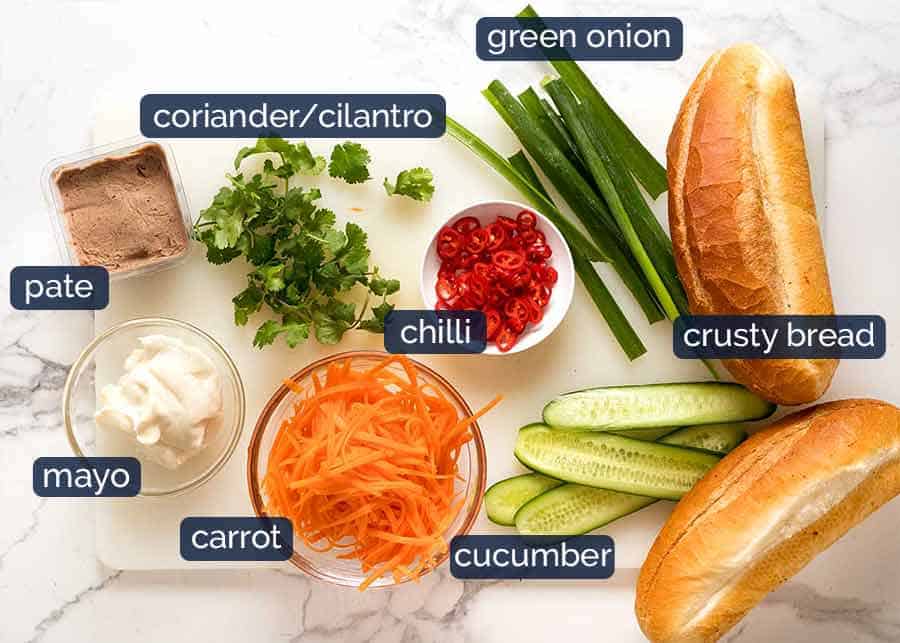
3.2. Popular Bánh Mì Fillings
Bánh mì sandwiches are celebrated for their flexibility and the wide extent of fillings they offer. A few prevalent bánh mì fillings incorporate juicy cuts of barbecued or grilled pork (bánh mì thịt nướng), flavorful Vietnamese meatballs (bánh mì xíu mại), delicate cuts of broil chicken or duck, and indeed fish alternatives like shrimp or angle.
Vegetarian adaptations frequently highlight tofu or tempeh as the protein source. These fillings are regularly served with a cluster of new herbs, vegetables, and condiments that include layers of flavor and surface to the sandwich, making a scrumptious and fulfilling dinner.

3.3. Where to Find the Best Bánh Mì
To savor the finest bánh mì, investigating neighborhood markets, road nourishment stalls, and small family-run eateries in Vietnam may be a must. In cities like Hanoi, Ho Chi Minh City, and Hoi An, you’ll discover plenty of choices that serve up uncommon bánh mì.
Street merchants and hole-in-the-wall shops frequently offer bona fide and scrumptious forms of this adored sandwich. Also, do not hesitate to ask locals for their recommendations; they’ll likely lead you to covered up diamonds where you’ll be able to enjoy the extreme bánh mì encounter.
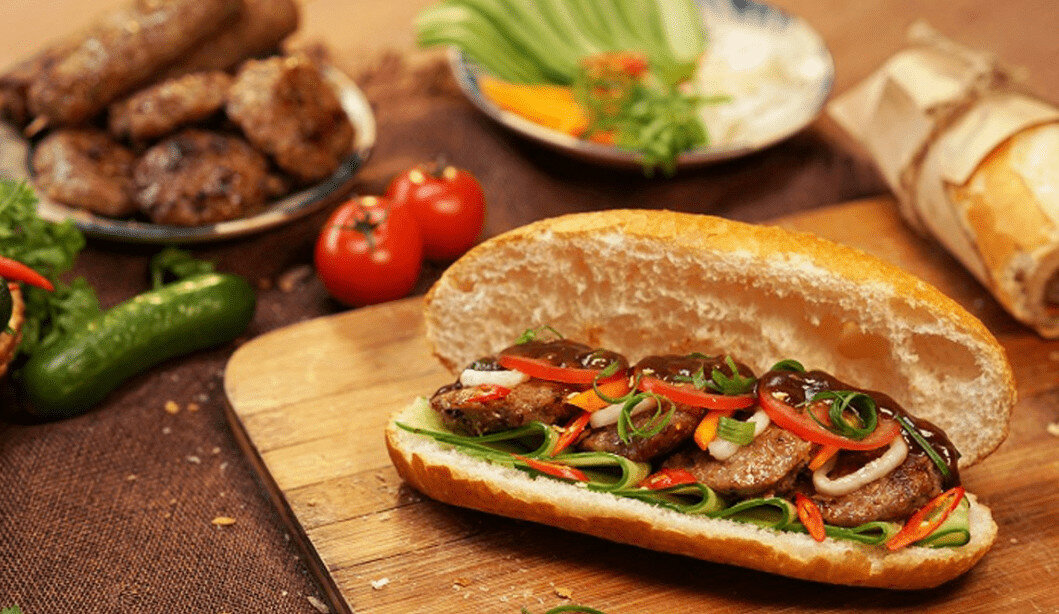
IV. Cơm Tấm – Broken Rice Breakfast
4.1. What is Cơm Tấm?
Cơm tấm, frequently alluded to as “broken rice,” could be a prevalent Vietnamese dish known for its interesting surface and flavorful backups. It begins from Southern Vietnam and comprises little, broken grains of rice that are a byproduct of the rice processing process.
The broken rice is regularly served with an assortment of fixings, which can incorporate flame broiled pork, shredded pork skin (bì), steamed egg custard (chả trứng), and different herbs. It’s regularly went with by a sweet and savory angle sauce-based dressing known as nước mắm, which adds a delightful umami flavor.
Cơm tấm could be an adored road nourishment in Vietnam, advertising a fulfilling and reasonable supper that’s both top notch and filling.

4.2. Common Cơm Tấm Accompaniments
Cơm tấm, frequently alluded to as “broken rice,” is a famous Vietnamese dish known for its exceptional surface and delightful backups. It starts from Southern Vietnam and comprises of little, broken grains of rice that are a side-effect of the rice processing process.
The wrecked rice is ordinarily presented with different fixings, which can incorporate barbecued pork, shredded pork skin (bì), steamed egg custard (chả trứng), and different spices.
It’s not unexpected joined by a sweet and exquisite fish sauce-based dressing known as nước mắm, which adds a brilliant umami flavor. Cơm tấm is a dearest road food in Vietnam, offering a delightful and reasonable dinner that is both scrumptious and filling.
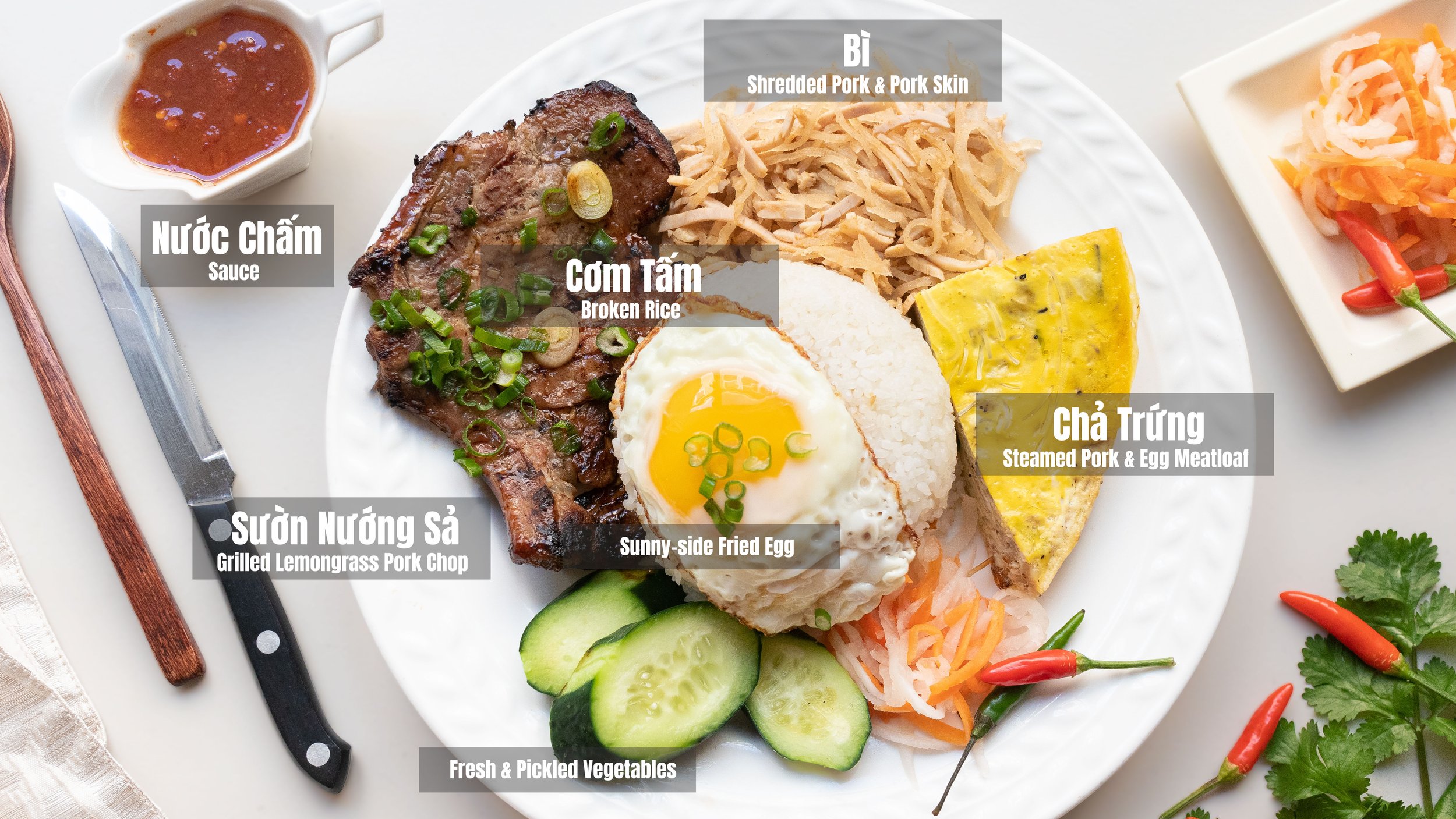
4.3. Regional Cơm Tấm Variations
Vietnam’s varied culinary traditions are showcased through the regional differences in cơm tấm. In the southern parts of the country, such as Ho Chi Minh City, cơm tấm usually comes with grilled pork (cơm tấm sườn) accompanied by pickled vegetables on the side.
In the Mekong Delta region, grilled seafood like fish or shrimp is commonly added. Central Vietnamese cơm tấm incorporates seafood, reflecting the area’s coastal influences.
These diverse regional variations of cơm tấm combine distinct flavors and ingredients, making it an exciting dish to try throughout Vietnam.
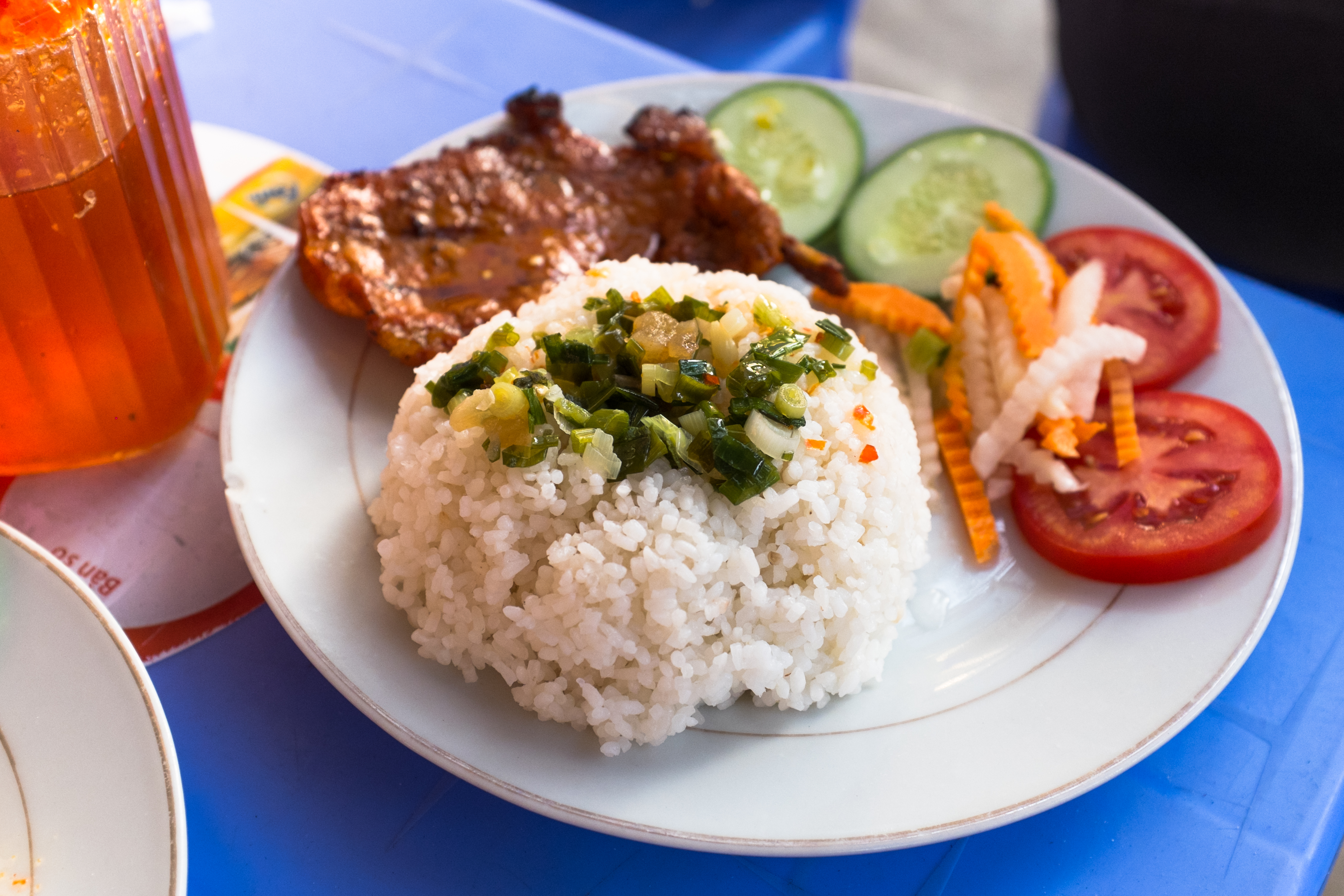
V. Xôi – Sticky Rice Breakfast
5.1. Types of Xôi
Vietnamese cuisine boasts a versatile dish called xôi, which is predominantly made of glutinous rice. Its varied types are characterized by distinctive ingredients and taste profiles.
Notable examples include xôi gấc, featuring red rice mixed with nutrient-rich gấc fruit; xôi lá cẩm, with natural purple hues extracted from magenta plant leaves and sweetened with mung bean and coconut; and savory xôi xéo made of turmeric-infused sticky rice and mung bean paste.
Xôi is also served as a sweet dish topped with peanuts, sesame seeds, or mung beans, a favored breakfast or snack in Vietnam.
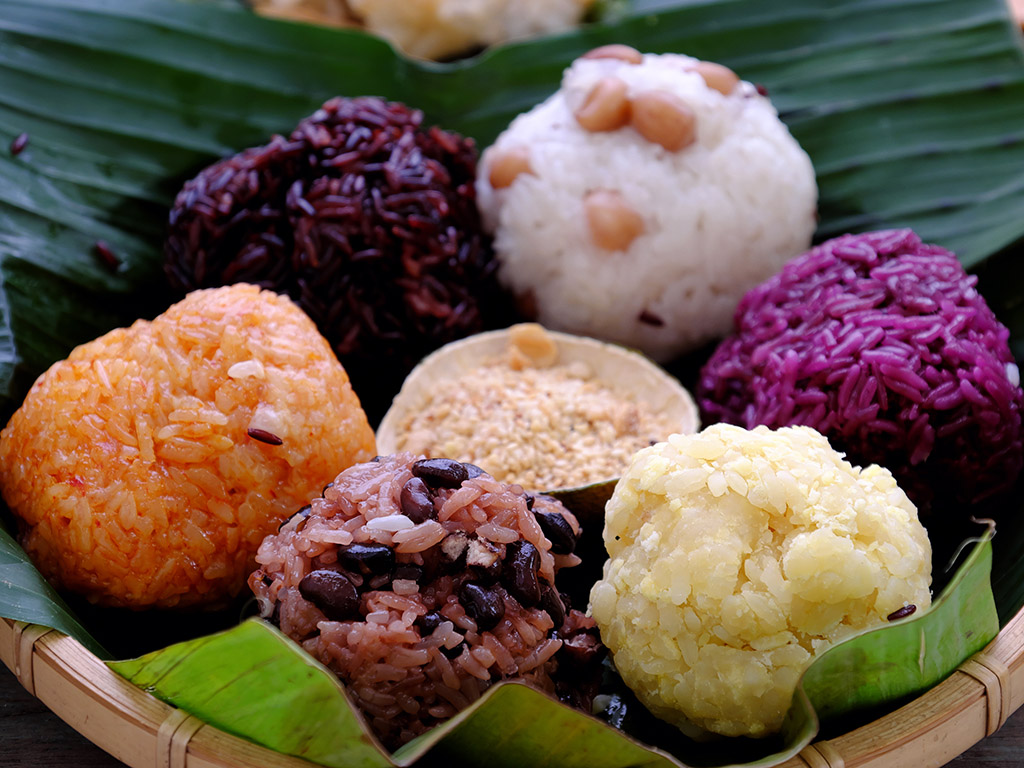
5.2. Toppings and Flavors
Vietnam’s sticky rice dish, xôi, caters to various preferences with a broad range of toppings and flavors. Savory add-ons can include ingredients like dried shrimp, shredded chicken, mung bean paste, or Chinese sausage. Sweet versions are often dressed up with toppings like coconut cream, sweet mung bean paste, sesame seeds, or roasted peanuts.
Xôi’s flavor palette spans sweet and savory, with sweet xôi ngọt enriched with coconut milk, sugar and pandan leaves, and xôi mặn featuring ingredients like soy sauce, herbs and spices, and fried shallots for a more savory taste. This versatility makes xôi a go-to breakfast, snack, or dessert choice in Vietnamese cuisine.
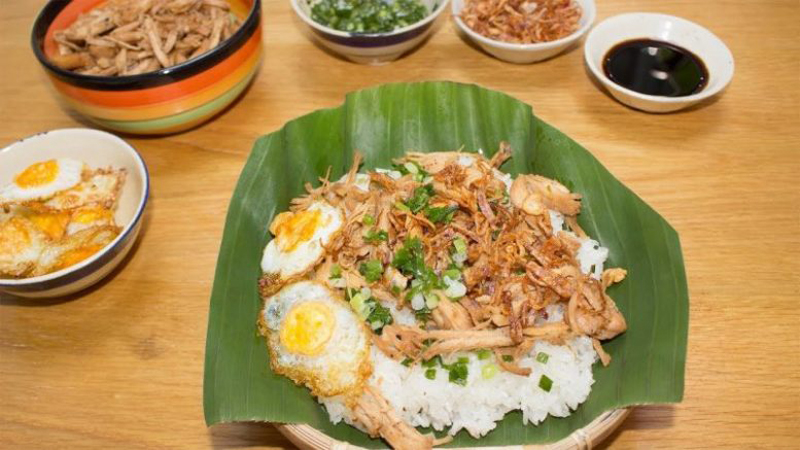
5.3. Xôi in Vietnamese Culture
Vietnam honors xôi as a treasured dish that embodies culinary heritage and cultural customs. It often graces the tables of family reunions, fêtes, and food trucks, affording a practical and delightful meal.
Xôi is constitutionally linked to religious ceremonies and memorials, compounding the dish’s relevance to significant occasions and festivities. Xôi’s versatility, ranging from sweet to savory, increases its applicability to divergent events, and its existence signifies the magnificence of communal eating and generosity intrinsic in Vietnamese culture.
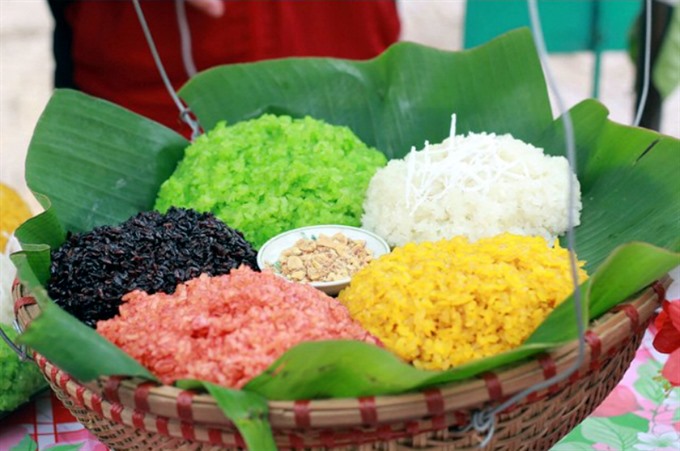
VI. Bánh Cuốn – Rice Rolls for Breakfast
6.1. How Bánh Cuốn is Made
Bánh cuốn, a classic Vietnamese cuisine, involves pouring a fine batter of rice flour on a steaming pot of water-covered by a cloth. Through the power of steam, the batter forms into a delicate rice pancake that is meticulously rolled and then filled with a delectable concoction of spiced ground pork, minced wood ear mushrooms and optionally, minced shrimp.
Usually adorned with freshly chopped cilantro, mint, shallots fried to a crisp amongst other garnishes, this dish is served with a sauce of fish sauce, sugar, and lime juice. The precision of creating the thin, spongy rice pancakes and deftly stuffing them necessitates considerable mastery, ultimately yielding a scrumptious and gratifying Vietnamese specialty.

6.2. Filling and Dipping Sauce
The filling of Bánh cuốn, a Vietnamese dish, is a savory mixture involving ground pork, minced wood ear mushrooms, and sometimes minced shrimp. This combination creates a flavorful and textured interior for the delicate rice crepes, making each bite a delightful experience.
The dipping sauce, which is a crucial accompaniment to Bánh cuốn, combines fish sauce, sugar, lime juice, garlic, and chili, resulting in a harmonious balance of sweet, salty, tangy, and spicy flavors that enhance the overall taste of the dish. Each roll is dipped in the sauce, adding to the irresistible combination of flavors that make Bánh cuốn a culinary delight.

6.3. Bánh Cuốn Traditions
Bánh cuốn holds a significant place in Vietnamese culture, being closely linked to familial traditions and communal gatherings.
It is a beloved dish that is often prepared and enjoyed during special occasions and family reunions, with generations coming together to create and enjoy this delicacy. The process of making bánh cuốn is a collaborative effort, with family members and friends playing different roles in preparing the different components of the dish.
The sharing of culinary knowledge and the sense of togetherness that arises from this process are crucial to the preservation of Vietnamese culinary traditions, reinforcing a strong sense of cultural identity and connection within the Vietnamese community.
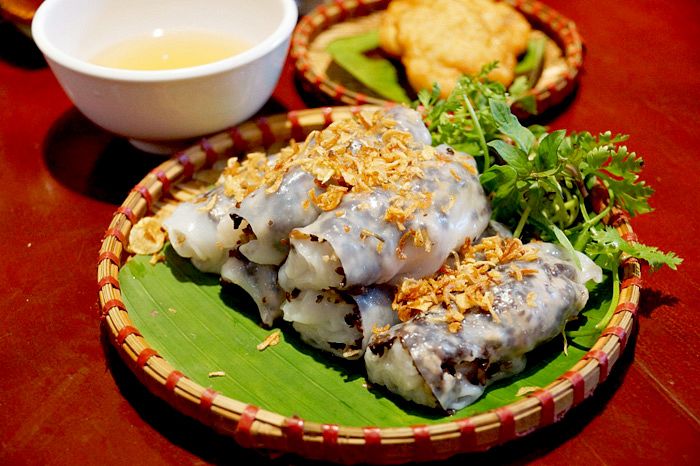
VII. Cháo – Vietnamese Rice Porridge
7.1. Varieties of Cháo
Cháo, a popular Vietnamese rice pudding, has numerous delicious varieties to suit different tastes and preferences.
Some common types of cháo include cháo gà (chicken congee), made with tender pieces of chicken and often garnished with ginger and green onions for added flavor; cháo lươn (eel porridge), featuring tender pieces of eel for a unique and savory taste; and cháo lòng (offal congee), which includes organ meats like liver and heart for those who enjoy more adventurous flavors.
In addition, cháo can also be sweet, such as cháo hạt sen, a dessert porridge made with lotus seeds, and cháo bắp, a sweet corn porridge. This versatility in cháo highlights the richness of Vietnamese cuisine, making it suitable for both comforting meals and delightful desserts, depending on your preferences.
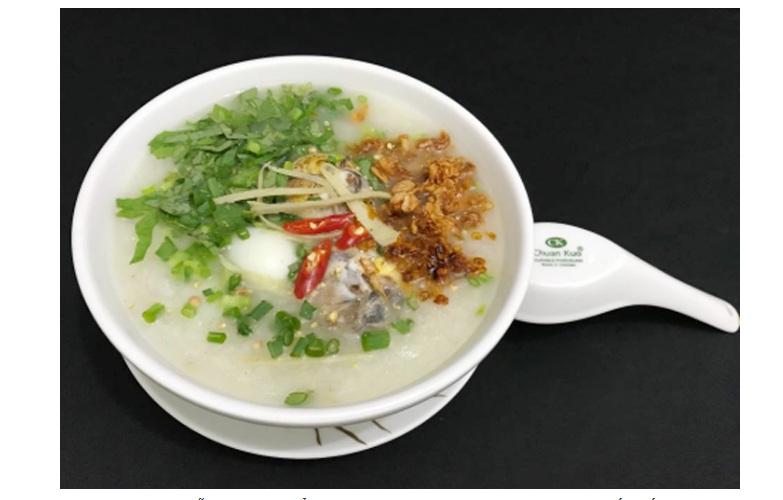
7.2. Popular Cháo Ingredients
Popular ingredients in Vietnamese cháo, or rice porridge, encompass a wide range of flavors and textures. Some common choices for savory cháo include chicken, pork, beef, fish, and even seafood like shrimp and squid.
Ginger and green onions are frequently used to add aromatic notes, while various herbs and vegetables like cilantro, bean sprouts, and fried shallots serve as garnishes. For sweet cháo, ingredients like lotus seeds, mung beans, coconut milk, and a variety of tropical fruits are added to create delightful and comforting dessert porridges.
The versatility of cháo ingredients allows for a diverse and satisfying culinary experience in Vietnamese cuisine.
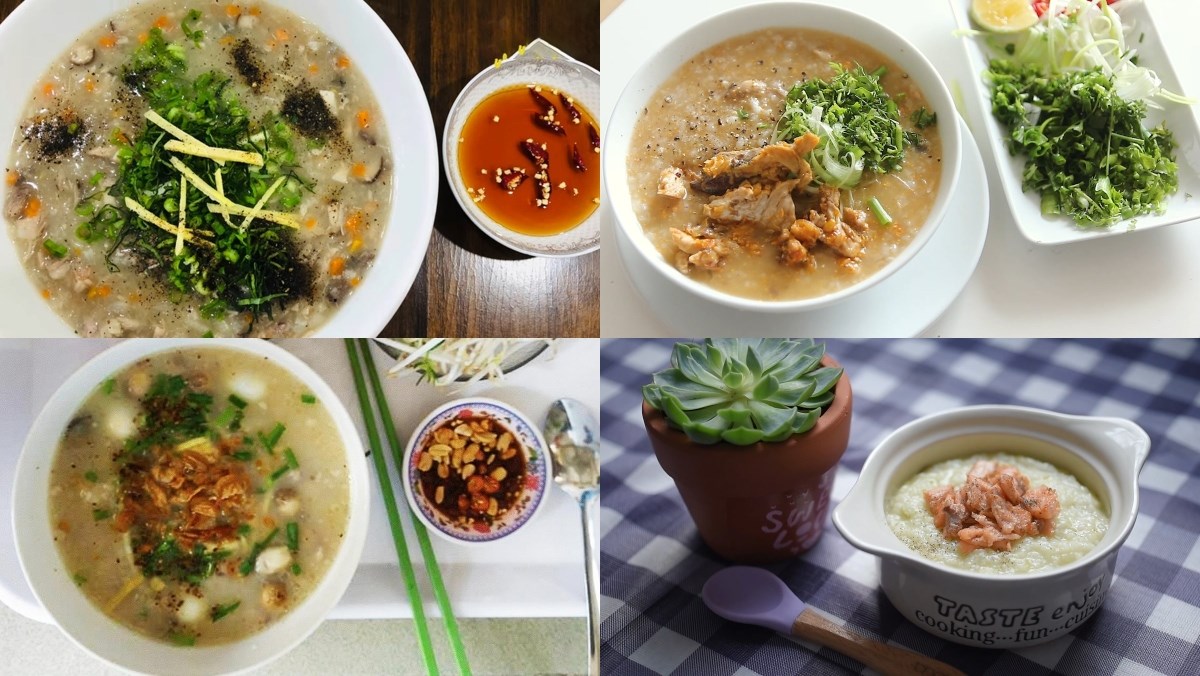
7.3. Health Benefits of Cháo
Vietnamese rice porridge known as cháo has a number of health advantages. It provides vital nutrients and water and is an excellent alternative for persons with digestive problems or during illness due to its readily digested and soft texture.
Ginger, which can help with nausea relief and digestion, is frequently ingested with chao. Additionally, the meal is minimal in calories and fat, making it healthy for weight control.
Cháo has a higher nutritional value because to the addition of lean meats, herbs, and vegetables, making it a more filling meal. Overall, cháo offers a satisfying and soothing alternative that promotes overall wellness and may be customized to meet different dietary demands.
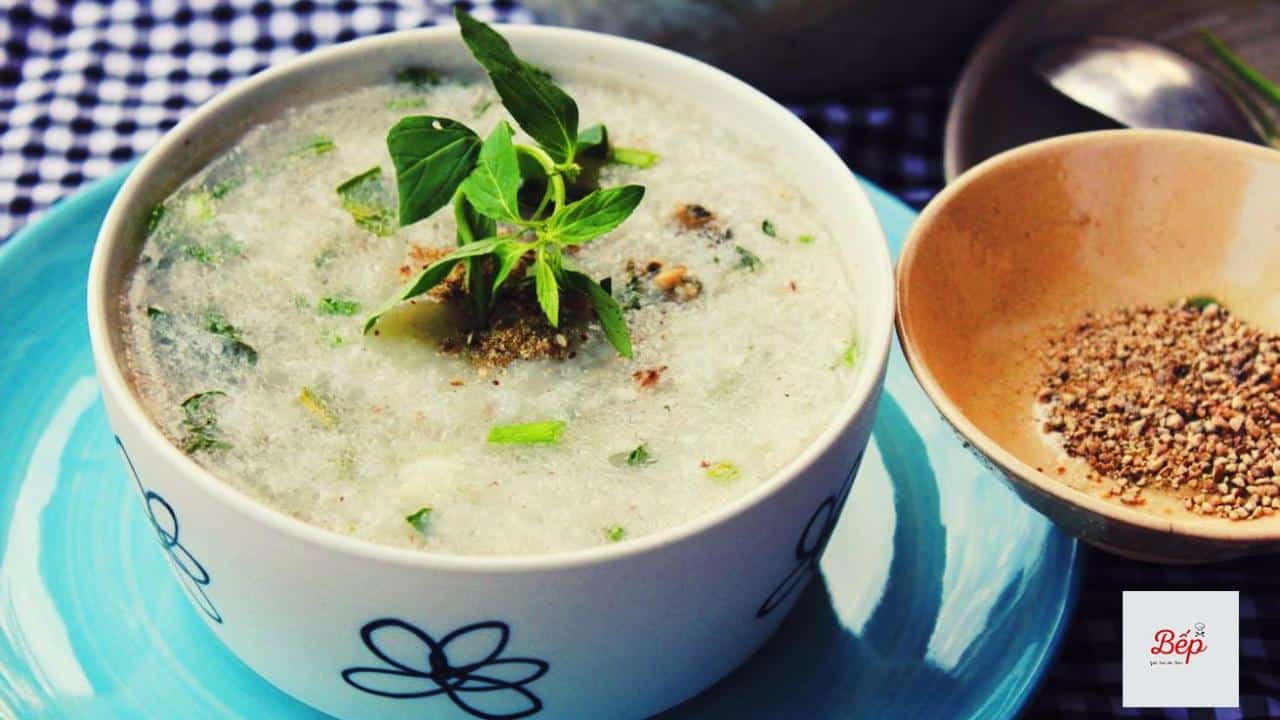
VIII. Bún Riêu – Crab Noodle Soup
8.1. What is Bún Riêu?
Bún riêu, a popular Vietnamese noodle soup, is a delightful dish known for its unique and flavorful broth made with rice vermicelli noodles, tender pieces of crab or shrimp, and a rich tomato-based broth infused with crab paste.
It is typically garnished with fresh herbs, shredded water spinach, fried tofu, and sometimes cubes of congealed pig’s blood, adding texture and rich flavors to the bowl. The soup is often served with a side of shrimp paste, lime wedges, and chili, allowing diners to customize the taste to their liking.
Bún riêu is celebrated for its satisfying blend of sweet, savory, and tangy flavors that make it a beloved dish in Vietnamese cuisine.

8.2. Key Ingredients and Flavors
Bún riêu features a tantalizing broth and toppings, with its constituents contributing to its special taste. The flavorful soup is made up of a unique combination of succulent tomatoes and either shrimp or crab paste, producing a sweet and savory aftertaste.
The dish usually comprises tender shrimp or crab meat along with tofu, water spinach, and often pig’s blood cubes. The entwined flavors have multiple layers, blending the captivating taste of seafood’s umami effect, sweet-tartness from tomatoes with fresh herbaceous notes.
The resulting medley creates a gratifying and appetizing meal, making bún riêu’s consumption an experience worth relishing.
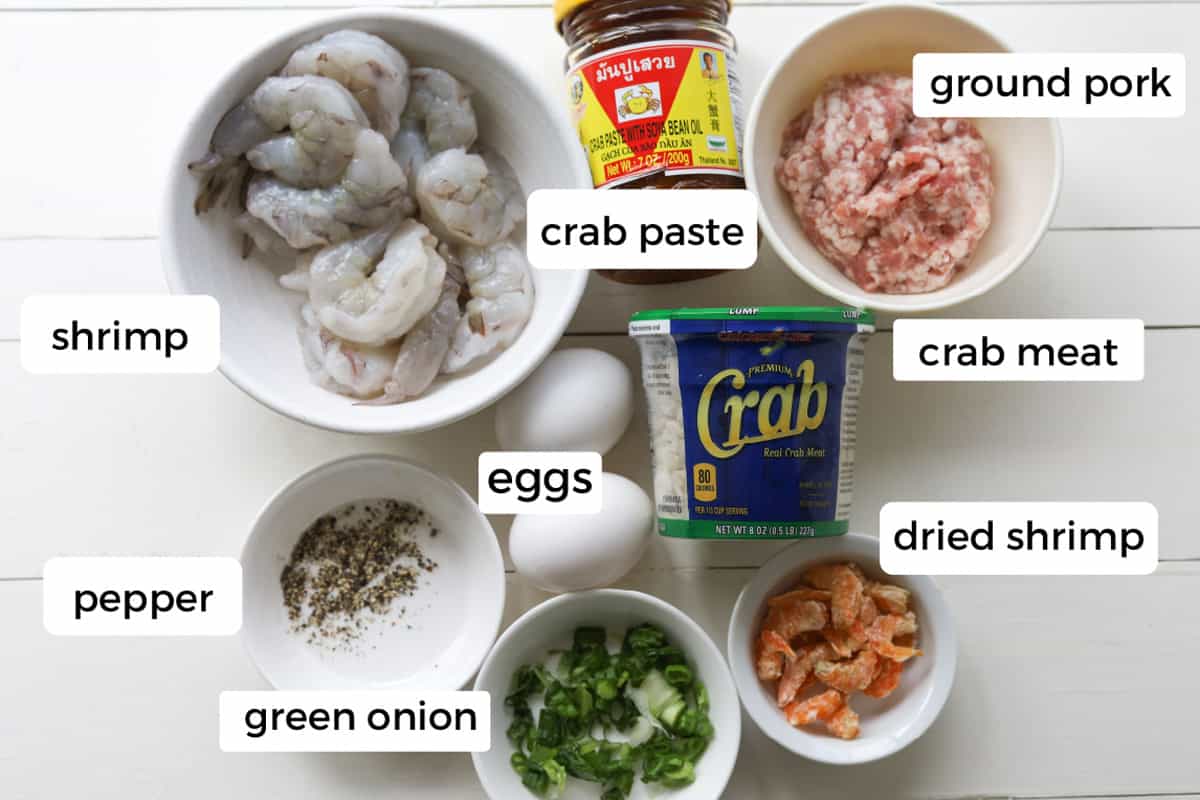
8.3. Regional Variations of Bún Riêu
Across Vietnam, bún riêu comes in multiple versions, with each taking after regional food culture and ingredients available. In northern localities, bún riêu is usually served with freshwater crab, resulting in a broth that is less tangy and has a delicate sweetness.
The southern region, particularly the Mekong Delta, serves bún riêu cua with saltwater crab that makes the broth saltier. Central Vietnam’s variation comes in the form of bún riêu cua ốc that features the addition of snails, presenting a novel texture and unmistakable flavor.
The disparities between these regional styles showcase the dynamism and variety of bún riêu in Vietnamese food, thus excites culinary exploration.

IX. Hủ tiếu – Vietnamese Noodle Soup
9.1. Hủ tiếu Types
Hủ tiếu is a classic Vietnamese noodle soup celebrated for its many variations, each with unique characteristics. One of the most popular renditions is Hủ tiếu Nam Vang, which delights in a pork-based broth teeming with shrimp, ground pork, and minced garlic toppings, finished with Chinese chives.
Another style, Hủ tiếu Mỹ Tho, features a slightly sweet & savory broth alongside an array of proteins such as shrimp, squid, and pork. Another variety, Hủ tiếu Sài Gòn, boasts a seafood-intensive flavor with a luscious broth from shrimp and crab extracts.
These diverse Hủ tiếu versions capture the distinct regional vibes and ingredient accessibility in Vietnam, offering noodle soup enthusiasts varied flavors and textures to try.
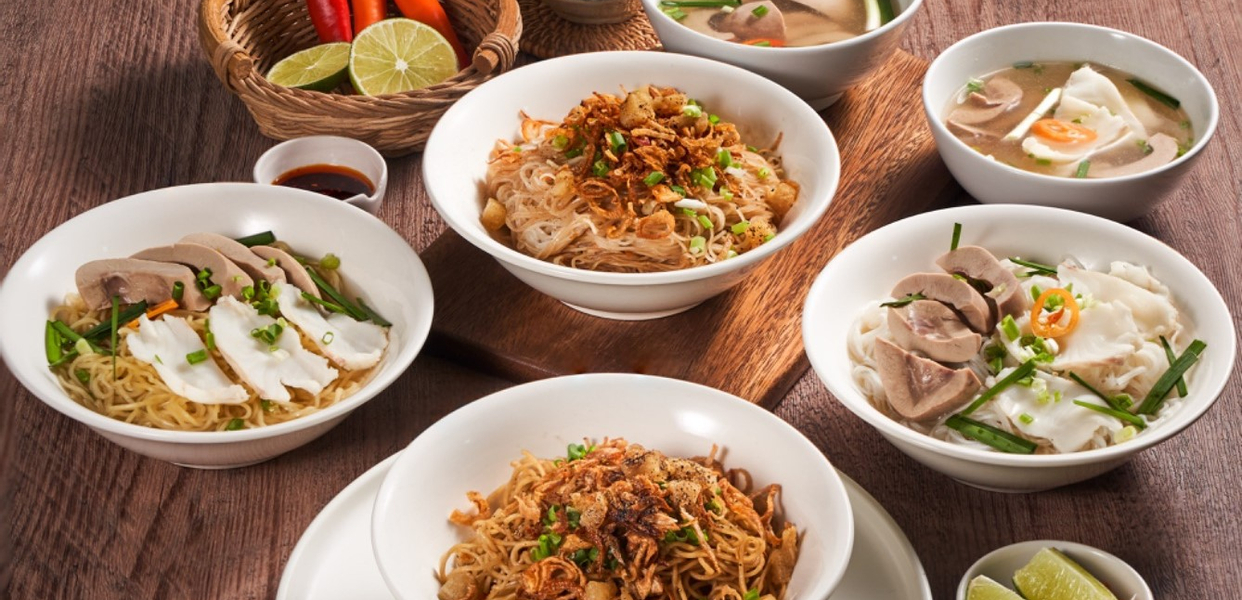
9.2. Hủ tiếu Toppings and Condiments
The Vietnamese noodle soup known as Hủ tiếu is famous for its versatility and distinct variations. Among the most prevalent types is Hủ tiếu Nam Vang, which features a delectable pork-based broth that is clear and flavorful with shrimp, ground pork, and minced garlic toppings served with Chinese chives.
Hủ tiếu Mỹ Tho has a slightly sweet and savory broth offers shrimp, squid, and pork proteins with a pleasant array of flavors. Hủ tiếu Sài Gòn stands out with a seafood-heavy flavor containing a rich, umami-filled broth derived from shrimp and crab extracts.
These varied Hủ tiếu types capture the unique regional culinary influences and ingredient availability in Vietnam, resulting in diverse flavors and textures that noodle soup enthusiasts can enjoy.

9.3. Where to Enjoy Hủ tiếu
When in Vietnam, be sure to indulge in the scrumptious flavors of hủ tiếu by venturing into local diners and street food stands, especially in popular urban areas like Mỹ Tho and Ho Chi Minh City, formerly recognized as Saigon.
In bustling city centers like these, there are countless variations of hủ tiếu available, each with a unique spin on the classic noodle soup. The best hủ tiếu experiences are often had in modest street stands or small, cozy family-run restaurants where you can delight in authentic and satisfying bowls of this adored Vietnamese cuisine.
Local insights are valuable in discovering the tastiest and most authentic hủ tiếu establishments, so don’t shy away from asking for suggestions from community members.
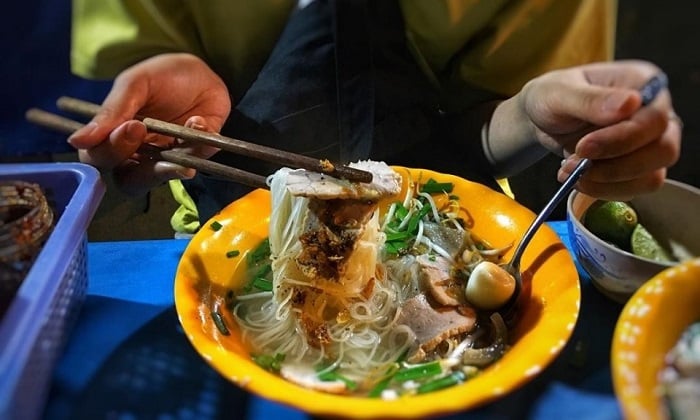
X. Beverage Options for Breakfast
10.1. Traditional Vietnamese Coffee
“Cà phê á,” or traditional Vietnamese coffee, is renowned for its powerful and rich flavor. Dark roast coffee beans that have been coarsely ground are often used to make it. The coffee is then brewed using a drip filter known as a “phin.”
A powerful and sweet coffee combination is created as the coffee gently drops into a glass that also contains sweetened condensed milk. A refreshing and energetic beverage, ca phê á is frequently served over ice, which makes it ideal for Vietnam’s hot and muggy atmosphere.
Condensed milk’s creamy richness and robust coffee flavor combine to create a delicious and classic Vietnamese coffee experience that is loved all throughout the country and is becoming more and more well-known outside.
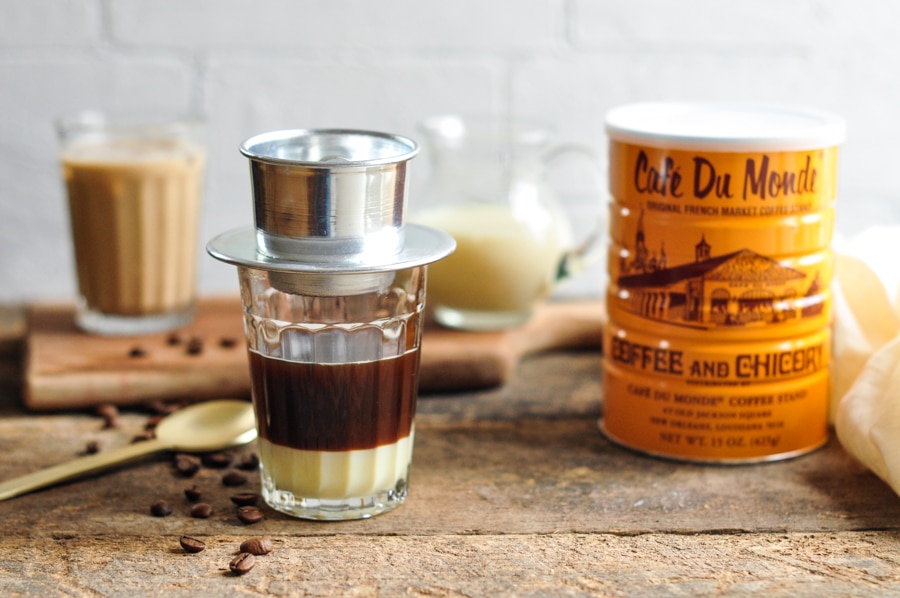
10.2. Fresh Fruit Juices
Fresh fruit juices, which are renowned for their reviving and tropical tastes, are a cherished and common component of Vietnamese cuisine. In Vietnam, there are a ton of tiny stores and street sellers selling a range of freshly produced fruit juices.
Orange juice, pineapple juice, watermelon juice, and sugarcane juice are a few examples of popular choices. In order to provide a tangy edge, these juices are sometimes served ice-cold and with a splash of lime or kumquat.
Vietnamese fresh fruit juices are not only a delicious way to fight the heat but also a great way to appreciate the abundant and rich tropical fruits that are grown there.
10.3. Herbal Teas and Broths
The traditional medicinal and culinary traditions of Vietnam both heavily rely on herbal teas and broths. These drinks are frequently savored for their calming and wellness-enhancing qualities.
Chrysanthemum tea (trà cúc), noted for its flowery perfume and relaxing qualities, and pennywort drink (nước rau má), said to offer a number of health advantages, are popular options.
In addition, a number of soups and broths, like bún bò Huế and canh chua, include herbal components like lemongrass, ginger, and herbs like Vietnamese coriander, giving these meals additional layers of taste and possible health benefits.
These herbal teas and broths represent Vietnam’s all-encompassing approach to nutrition and wellbeing, fusing gastronomic pleasure with medical traditions.

XI. Etiquette and Traditions
11.1. Breakfast Rituals in Vietnam
Vietnamese breakfast customs are an expression of the nation’s rich cultural history and societal values. Breakfast time gatherings among families around the table provide a sense of community and connection. Breakfasts like pho or banh mi are considered to be nutritious and soothing in traditional Vietnamese culture.
Morning rituals depend heavily on street food sellers, and crowded marketplaces provide a broad variety of breakfast choices. Additionally, eating meals—whether at home or at a roadside stall—is an important social practice that fosters harmony and strengthens ties among neighbors.
In Vietnam, breakfast is more than just a meal for survival; it’s a beloved custom that honors both food and the connections it fosters.

11.2. Sharing Meals in Vietnamese Culture
Vietnamese culture places a high emphasis on communal dining, which embodies the nation’s strong feeling of togetherness and community. Families and friends commonly get together to share meals like pho, bánh m, or other noodle soups at a communal table.
Sharing meals together is a gesture of warmth and hospitality that highlights the value of fostering bonds and forming connections. At street food stands, it’s typical for strangers to sit at the same table, further demonstrating how welcoming and social Vietnamese eating is.
Sharing is more than just distributing food; it is a cultural ritual that strengthens ties between people and the tight-knit fabric of Vietnamese society.
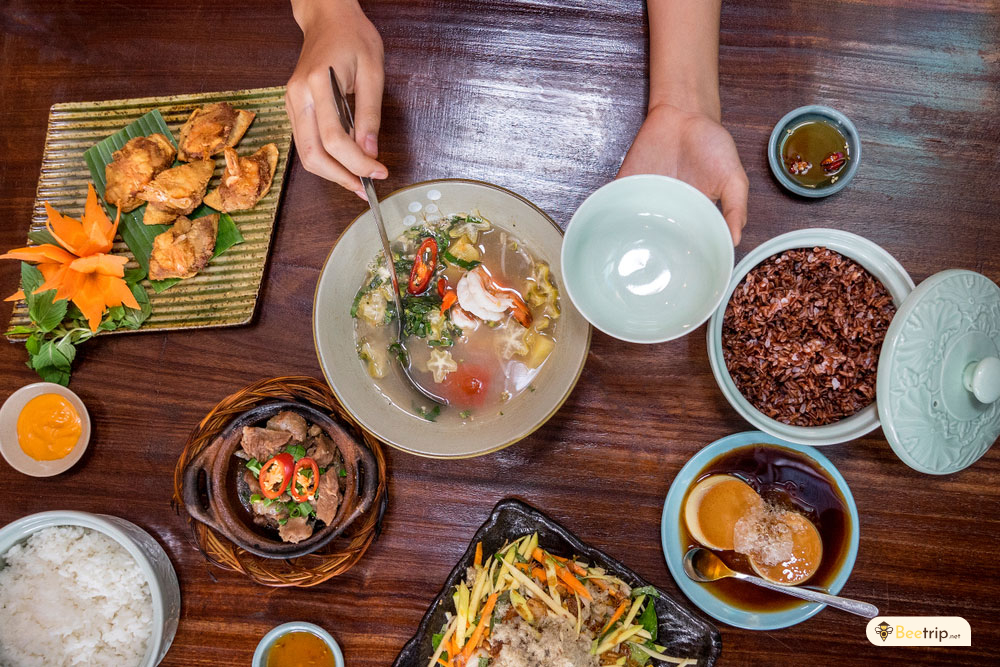
11.3. Breakfast Street Food Culture
In Vietnam, the culture of breakfast street food is thriving and essential to daily life. Early in the morning, street sellers put up stalls and provide a variety of scrumptious and reasonably priced breakfast alternatives.
The streets are a lively gastronomic playground, offering everything from steamy bowls of pho and freshly grilled bánh m sandwiches to savory xôi and fragrant cups of cà phê á. Both locals and visitors assemble curbside to enjoy these delicacies, sometimes seated on little plastic stools, fostering a vibrant and social atmosphere.
In addition to offering quick and delicious breakfasts, the street food culture captures the spirit and soul of Vietnamese cuisine, which is beloved for its tastes, accessibility, and feeling of community it promotes.
